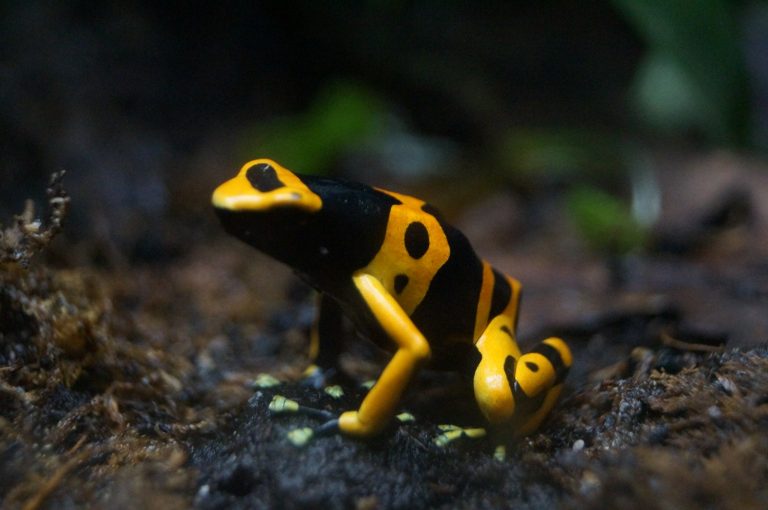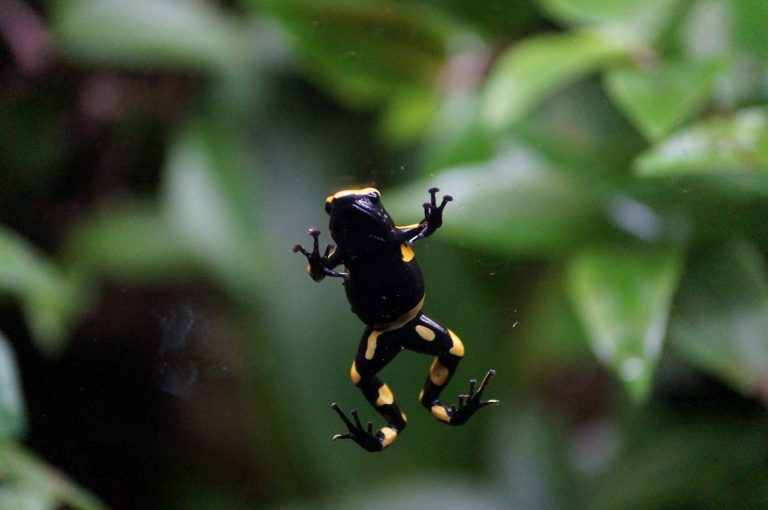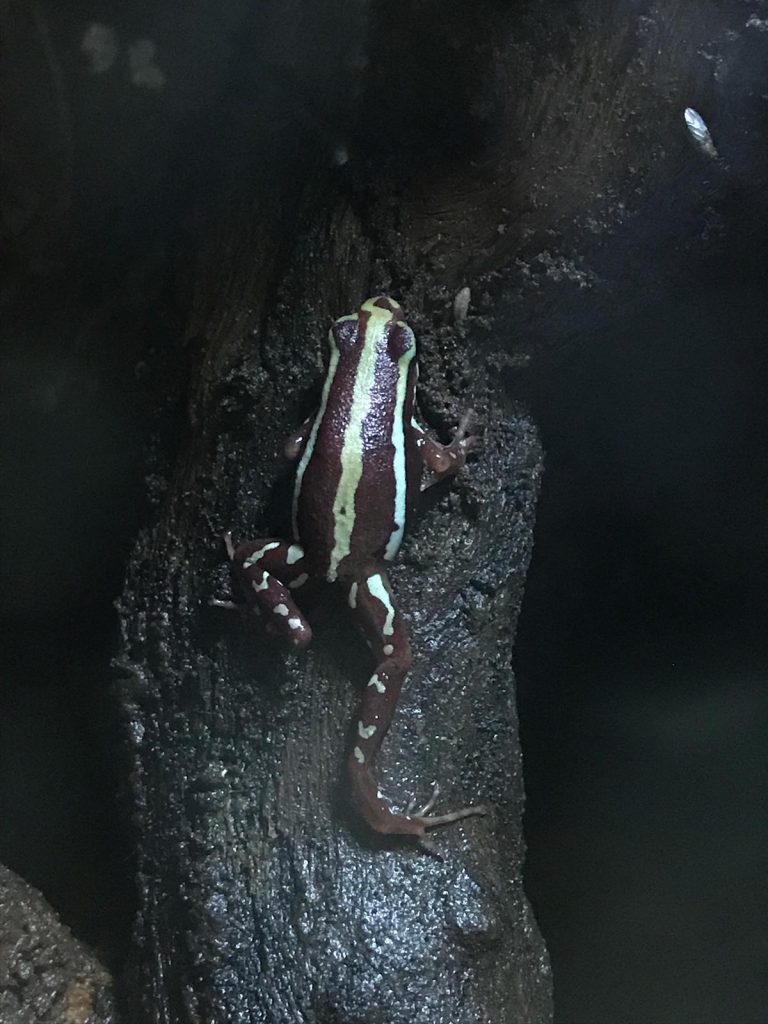
One of the most colourful animals on the planet, poison dart frogs are a real rainbow of shades, hues and tints. And though these little guys look cute, don’t take them for granted – they’re called poison dart frogs for a reason: they’re among the world’s most toxic animals! Poison dart frogs are a unique bunch among the frog family, and we’ll learn all about them below.
How to identify a poison dart frog
The first thing you’ll notice about poison dart frogs is their incredible array of colours. You can find yellow, copper, gold, red, blue, green, black and even combinations of these colours. Their vivid appearance is more than just for show though – they use these bold colours to warn predators of how dangerous they can be. This is a defence mechanism with a fancy-sounding name: aposematic colouration. And these colourful warnings are there for good reason: the poison that some poison dart frogs store in their skin can paralyse, or even kill, a predator.
So how else can you identify a poison dart frog? Well, despite their toxic potential, they’re very small in stature, usually growing to just one to two inches long. They’re also diurnal, so they’re awake during the day; this is quite unusual since most other frogs are nocturnal.
As for where they live, poison dart frogs are usually found in the tropical rainforests of Central and South America. They mostly live on land, but some like to call their home high up in trees.
When it comes to what they like to eat, poison dart frogs are insectivores, so their favourite food consists of things like ants and other small insects, which they find on forest floors. It’s been said that the toxins in their skin relate to the kinds, and the amount, of insects that they eat!
What does the poison dart frog lifecycle look like?
You might think that poison dart frogs follow the lifecycle of any other frog. Sure, there are similarities, but poison dart frogs go on a pretty incredible adventure before they become actual frogs. Let’s take a look at the process:
- A poison dart frog’s life begins when an adult female lays her eggs on the ground. This is different from other types of frogs, who will usually lay their eggs in or near water
- Once the eggs have been laid, the male fertilises them. Things get different again because instead of the male taking off after fertilisation and the female becoming the protector, it’s the other way round!
- The father then remains with the eggs until they hatch. At this point, the mother returns and the tadpoles wiggle their way onto their mother’s back
- The mother and the tadpoles then venture off to find a safe place where they can begin the process of metamorphosis. This safe place takes the form of a bromeliad, a colourful tropical plant that has the ability to hold rainwater in its leaves. In other words, they make the perfect spot for tadpoles to stay in over the next 6 – 8 weeks.
- During this time, the tadpoles feed on mosquitoes, larvae and unfertilised eggs the mother brings them. They also grow legs, and their tails disappear. When this happens, they’re ready to make their way back to the jungle floor
- At this point, they’ve become full-fledged frogs and are ready to start their lives properly!
So just to recap: they’re protected by their dads, carried on the backs of their mums, and stay in a pool of water contained in a bromeliad plant. In comparison, other frogs simply keep their eggs in ponds, lakes or streams and stay there the whole time.
Where to see poison dart frogs at Blue Planet Aquarium
Want to see these amazing creatures for yourself? All our visitors can come see them at our Frog Zone exhibit, where along with the poison dart frog, you can find some other venomous beasties, including the the Social Spider, the Goliath Birdeater, and the Giant Spiny Assassin Bug!
Fear not though: we control the diets of our poison dart frog so they’re not actually poisonous and pose no threat to any of our visitors!
Fun facts about the poison dart frog
- Where does the dart part of their name come from? It’s due to Native Americans and other indigenous cultures coating the tips of their blow darts before hunting
- They’re known to be very dominant animals. Many males fight for the most prominent spots in tree canopies before carrying out their mating call, while females will fight over the best nests
- Because they’re poisonous, they only have one natural predator which is the very cool-sounding fire-bellied snake, a species of snake that has developed a resistance to their venom
- The average lifespan for poison dart frogs in the wild is anywhere from 3 to 15 years
- The poison on their skin is never used to hunt with. When it’s feeding time, they slurp up unsuspecting insects using their tongue instead
- Their poison can be stored for years because these toxins are slow to weaken – this is why arrows and darts soaked in them can remain deadly for over two years
Had fun learning all about the Poison Dart Frog? You can find plenty of other exciting stuff about our animals here – and to say hi to them in person, why not hop over to our Getting Here page for information on how to find us?
Type
Amphibian
What do they eat?
Invertebrates
Size
Around 1inch
Water Type
Humid, tropical forest
Where are we?
Central and South America



